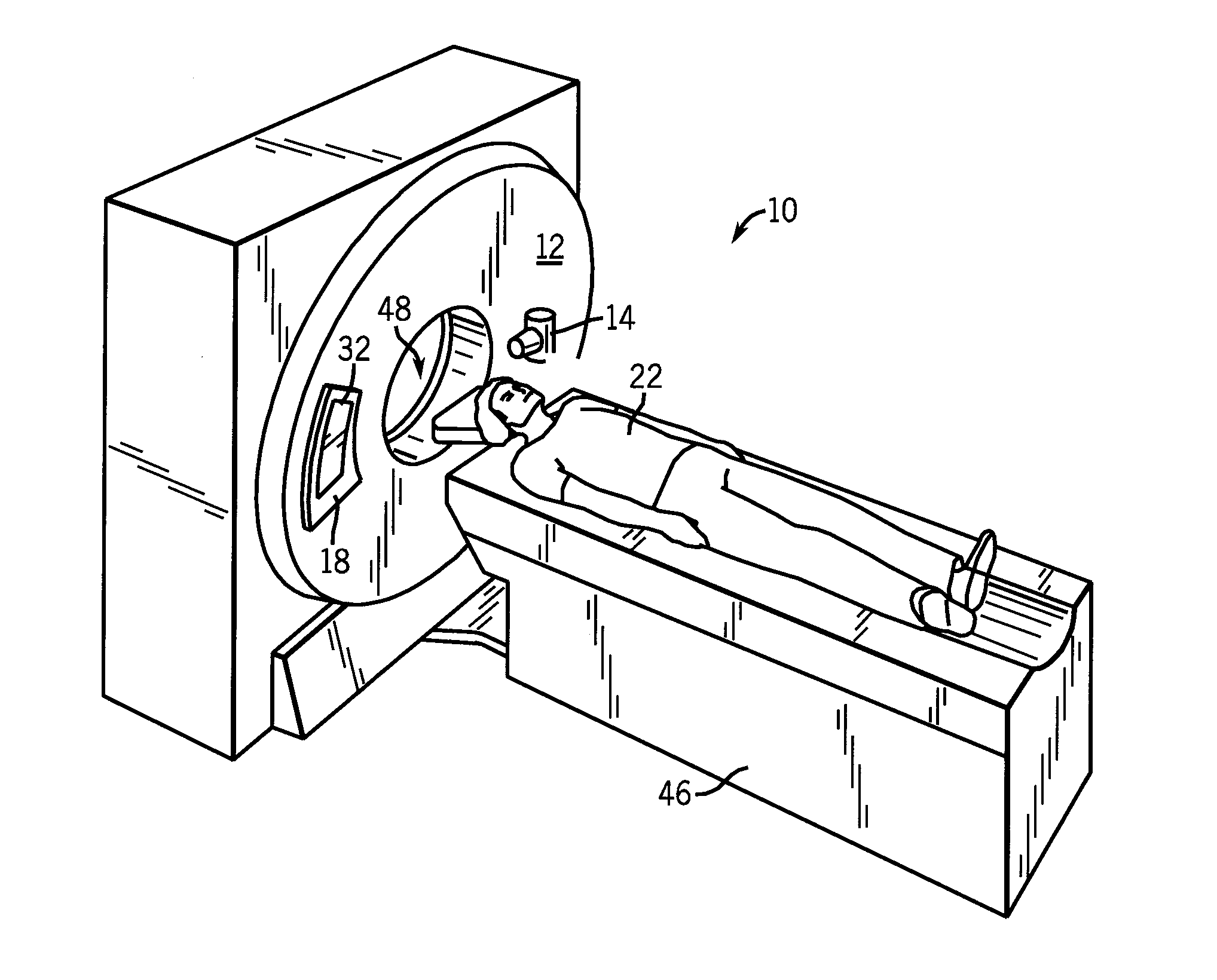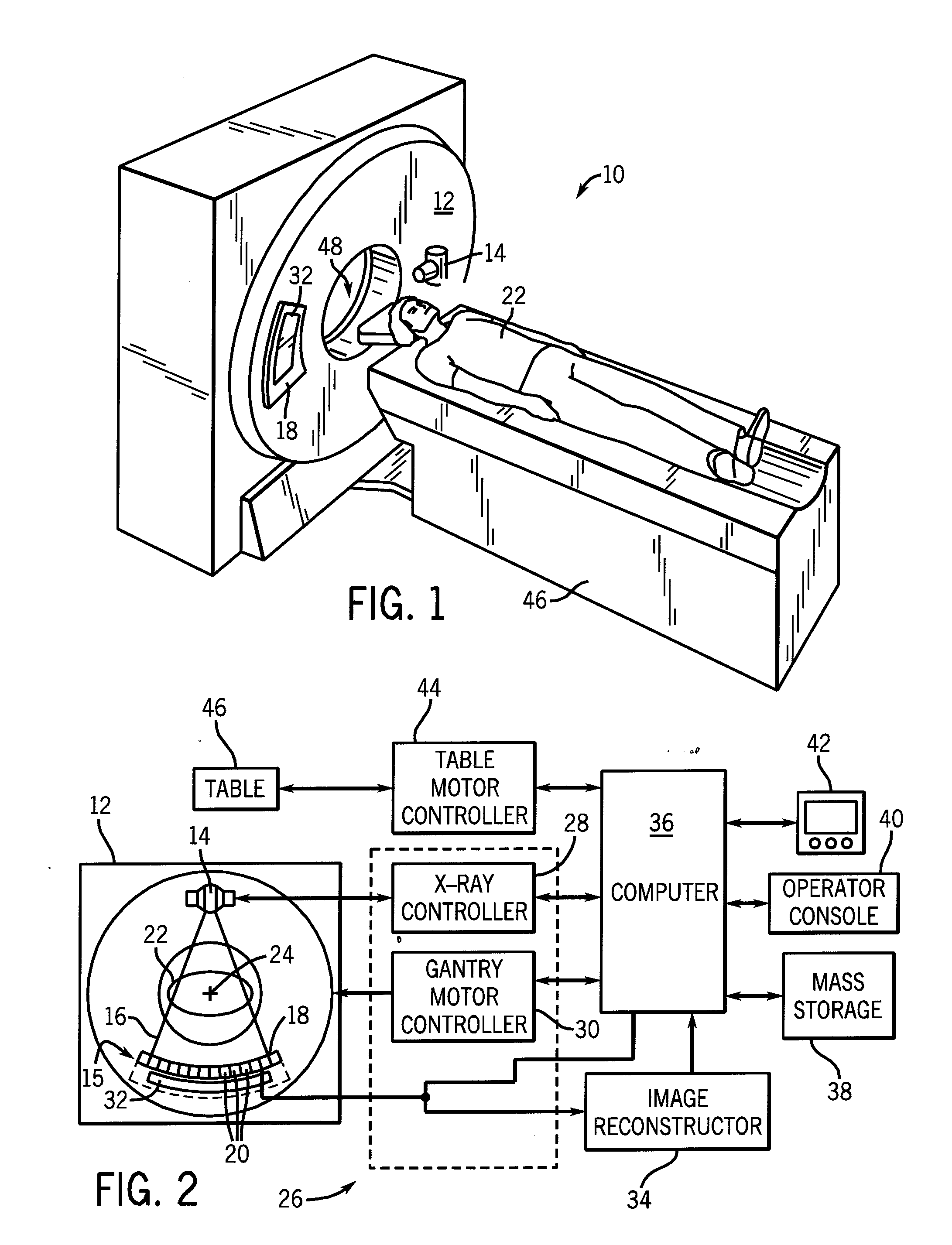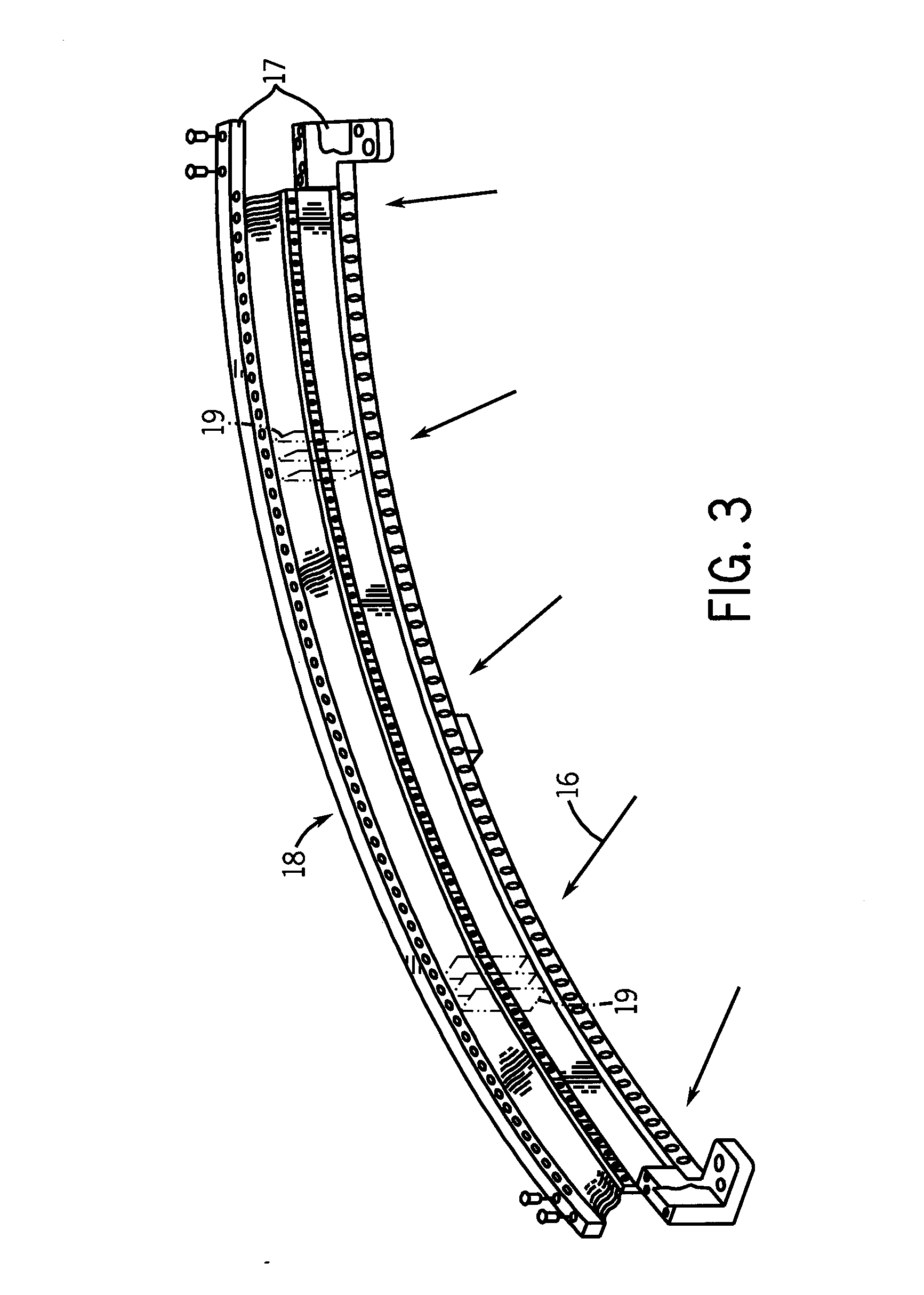Hybrid energy discriminating charge integrating ct detector
a detector and charge technology, applied in the field of hybrid energy discriminating charge integrating ct detectors, can solve the problems of inability to provide data or feedback as to the number and/or energy of photons detected, inability to provide energy discriminatory data or otherwise count the number and/or energy of photons actually received by a given detector element or pixel, and inability to discriminate between the energy of the photons, etc., to achieve the effect of rapid switch operation of sspm
- Summary
- Abstract
- Description
- Claims
- Application Information
AI Technical Summary
Benefits of technology
Problems solved by technology
Method used
Image
Examples
Embodiment Construction
[0025]In accordance with one aspect of the present invention, a CT imaging system is provided. The CT imaging system includes a detector constructed to perform photon counting and energy discrimination of x-rays at the high flux rates generally associated with CT imaging, and includes an adaptive DAS to rapidly switch between charge integrating and photon counting modes with appropriate timing during data acquisition.
[0026]The operating environment of the present invention is described with respect to a sixty-four-slice computed tomography (CT) system. However, it will be appreciated by those skilled in the art that the present invention is equally applicable for use with other multi-slice configurations. Moreover, the present invention will be described with respect to the detection and conversion of x-rays. However, one skilled in the art will further appreciate that the present invention is equally applicable for the detection and conversion of other high frequency electromagneti...
PUM
| Property | Measurement | Unit |
|---|---|---|
| decay time | aaaaa | aaaaa |
| response time | aaaaa | aaaaa |
| fluorescence decay time | aaaaa | aaaaa |
Abstract
Description
Claims
Application Information
 Login to View More
Login to View More - R&D
- Intellectual Property
- Life Sciences
- Materials
- Tech Scout
- Unparalleled Data Quality
- Higher Quality Content
- 60% Fewer Hallucinations
Browse by: Latest US Patents, China's latest patents, Technical Efficacy Thesaurus, Application Domain, Technology Topic, Popular Technical Reports.
© 2025 PatSnap. All rights reserved.Legal|Privacy policy|Modern Slavery Act Transparency Statement|Sitemap|About US| Contact US: help@patsnap.com



